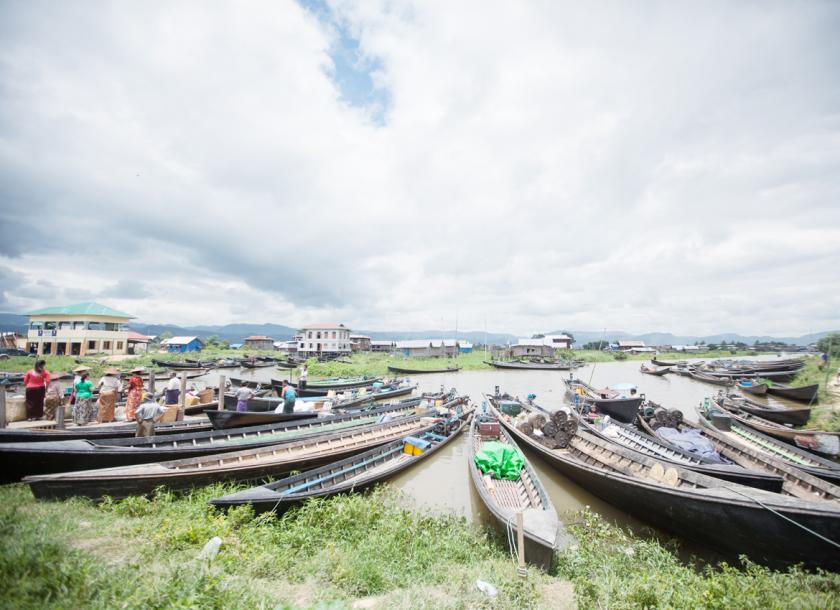Myanmar: Banking on satellite communications
Richard Bowles, regional managing director for ASEAN at Arianespace, which launches satellites, is convinced banks’ struggle to reach Myanmar’s unbanked population will end with the launch of its first satellite, slated for some time next year.
“Satellites are an important part of a country’s economic development. Looking at Myanmar’s satellite leasing capacity, it’s a good idea to have one indigenous satellite operator to give the banks the nationwide coverage they need to reach the greater population,” he said.
Myanmar’s banks have in recent years established a web of Automated Teller Machines (ATMs) to make banking easier for customers within major cities like Yangon and Mandalay, but also to capture a larger pool of people who have yet to open bank accounts. In the outskirts of the city and beyond though, network coverage falls away and huge swathes of the population are still unable to rely on ATMs to conduct their banking affairs.
While the banks have upped efforts to reach these potential customers through investments, financial education and technology, progress has been slow. In fact, with less than 2,000 ATMs installed in the country, Myanmar has just 33 ATMs for every one million people, the lowest ratio in ASEAN.
The way Bowles tells it, one reason for the poor ATM penetration is weak and unreliable network coverage. “It will be hard for the banks to convince people from the rural areas to use an ATM card, especially if the machine itself is frequently down when coverage drops. By relying on satellite coverage, which provides connectivity 24-7, banks can eliminate that problem,” said Bowles.
Indonesian experience
Take Indonesia, for example. “The country consists of an archipelago of 17,000 islands. The only way to bring network coverage and telecommunications to all the islands is via satellite,” said Bowles. Without sufficient coverage, Indonesia’s banks also faced constraints in bringing their services to customers.
Struggling to stay relevant to its customers strewn across the 3,000 kilometer archipelago, Bank Rakyat Indonesia (BRI), the country’s largest provider of small loans, ultimately bought its own $250 million satellite, the BRIsat, which was successfully deployed by an Arianespace rocket on July 2016. It also made BRI the world’s first bank with its own satellite.
The move has propelled BRI to the frontlines of banking in Indonesia. “Since turning to satellite communications, revenues at BRI are up 150 percent and it has already made enough money to break even on its investment in the satellite,” Bowles said.
 Richard Bowles, regional managing director for ASEAN at Arianespace, says satellite coverage will help Myanmar’s banks expand. Nyan Zay Htet/The Myanmar Times
Richard Bowles, regional managing director for ASEAN at Arianespace, says satellite coverage will help Myanmar’s banks expand. Nyan Zay Htet/The Myanmar Times
In fact, capacity on the BRIsat is filling up fast and the bank is now mulling a second satellite.
“In Indonesia, there are ATMs on boats as the banks increase their presence in the most remote areas. This would not be possible without satellite coverage,” Bowles added.
“With constant network coverage, the banking industry in Indonesia has expanded and boosted economic activity in a big way. As Myanmar is not a small country, if satellite coverage benefitted Indonesia, then it could also be the solution for the banking sector here. We just need the right infrastructure, such as solar equipment, to generate the required electricity.”
New satellite
Myanmar does, in fact, have plans to launch its own satellite, the MyanmarSat 2, to reduce the country’s dependency on foreign-owned capacity. It currently leases services on two Intelsat satellites to provide 2G and 3G communications services and broadband Internet access to businesses and the government.
Last October, Vice President U Myint Swe said he expects the new satellite to launch in June 2019.
The country will pay a sum of $155.7 million for MyanmarSat 2, which will carry six C-band and six Ku-band transponders.
Myanmar Posts and Telecommunications (MPT), the state-owned postal system, has already pledged to lease capacity on the new satellite. According to U Myint Swe, MyanmarSat 2 will be jointly owned by the government and an undisclosed partner.
If all goes according to plan, Myanmar’s banking sector may have a workable solution for reaching, and retaining, valuable new customers from the country’s most rural areas, helping to further develop and improve its economy.
Source: https://www.mmtimes.com/news/banking-satellite-communications.html


 English
English




